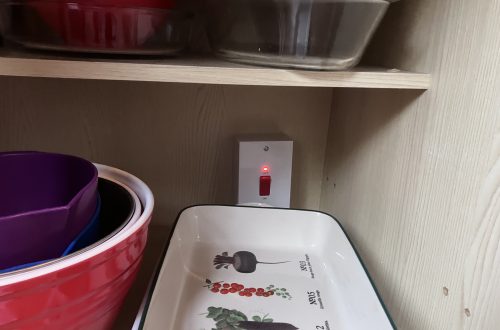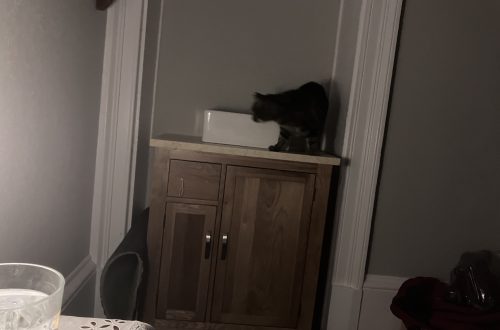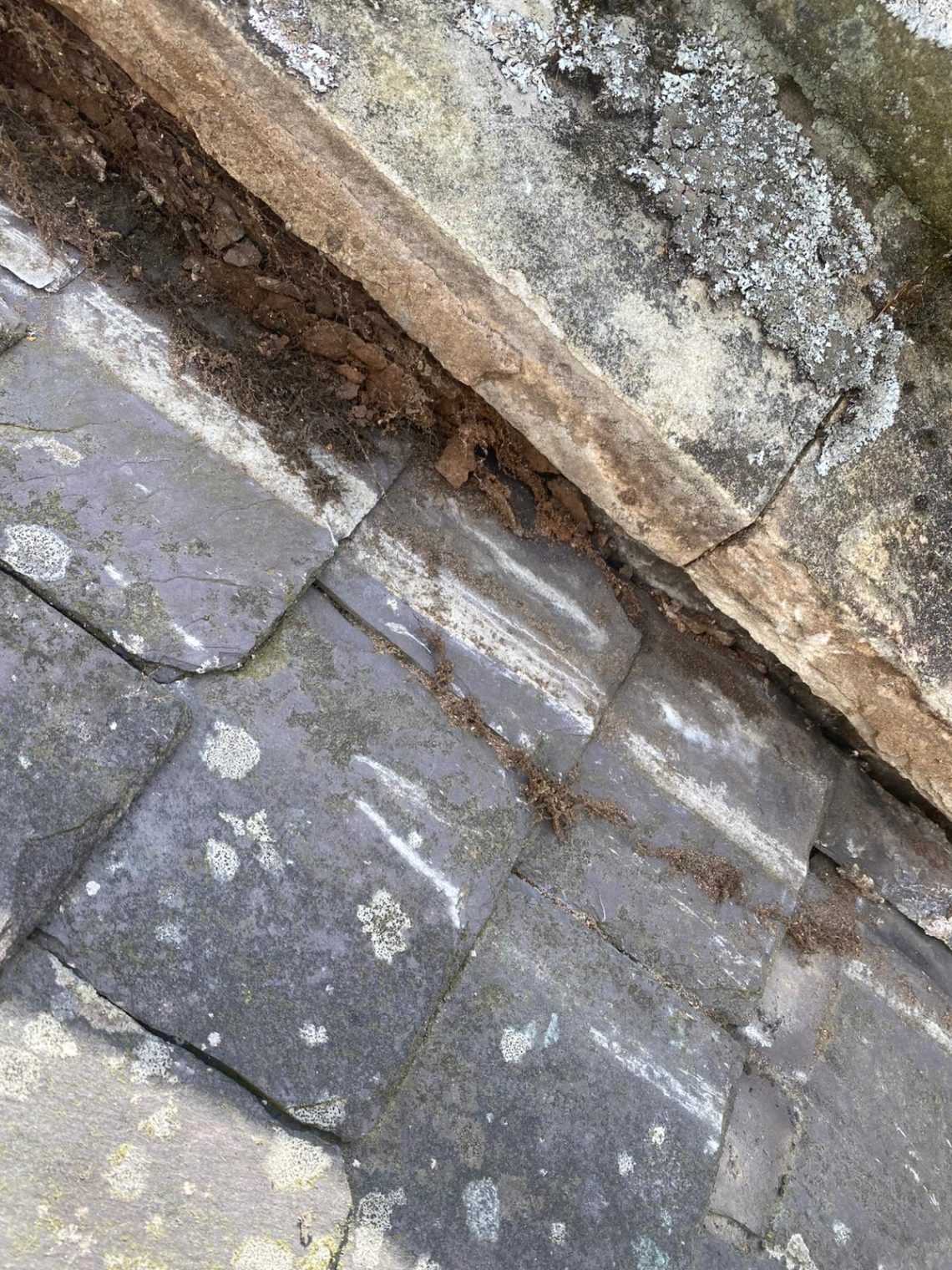
Roof – stage one
Just when we thought we were getting away (reasonably) lightly with things that could overtly be wrong with the house – we ran into a problem. A piece of the guttering at the back was broken and we got someone to look at it. Because of the age and character of the building we got a roofing company experienced in heritage slate roofs, and we asked them to do a review of the entire roof.
The results were perhaps not entirely unexpected, because Castlebank has not really been that well maintained, or rather, it has been sort of (in that it has cosmetically been kept up) looked after, but not in the way a Victorian house should. So on the roof we discovered that the previous owners had had a load of repairs done using modern concrete. This is a real no-no with Victorian buildings, because they have shallow foundations which are designed to “move” or “settle” a little. Modern concrete is very rigid and hard, so if you use it on this style of building it cracks away from its surrounds and breaks off. It also tends to cause damp. So for Victorian houses they should be repaired with lime mortar.
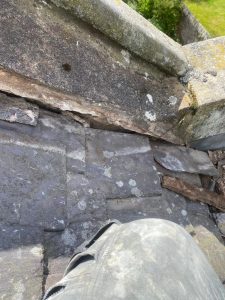
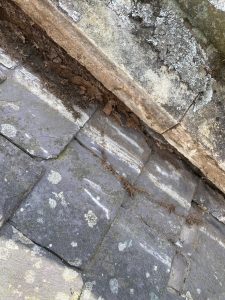
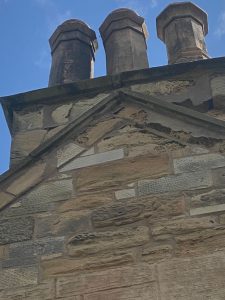
Not only that, but one of the chimneys is very eroded and needs to have some stones replaced.
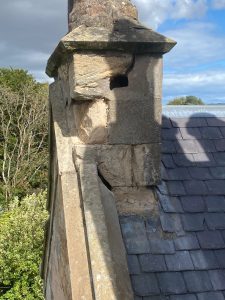
This is an extract from the quote showing what has to be done to restore a roof using traditional Victorian techniques.
Repointing works of skews copes and rear of chimneys Skews will all be chipped back
to cope bases we will be removing all the existing mortar from the areas required Any
damaged slates that occur when completing the work will be replaced where skews
have been chipped out The area will be cleaned of dust and debris before repointing
works are carried out Skews will be back bedded with lime mortar under the copes
and left over night to dry before repointing the next day they will be covered with
hessian over night to prevent drying process advancing quickly Repoint skews with
lime mortar and leave till leather dry before beating with churn brush to finish Cover
skews with hessian and dampen to slow drying process to prevent shrinkage and
cracking Copes joints will all be chipped out of old mortar Clean copes of dust and
debris from all joints Joints of cope will be repointed with lime mortar left to leather
dry and beat with churn brush to finish Copes will be covered with hessian and
dampened to slow drying process Rear of chimneys will be chipped out removing old
mortar from all area required All joints required on the chimeys will be cleaned of dust
and debris Repoint all joints and areas required with lime mortar leave to leather dry
and beat with churn brush to finish Cover with hessian and dampen to slow drying
process Visits between drying time will be required to dampen hessian to prevent
drying process advancing quickly to prevent shrinkage and cracking
So this is costing us some money (there goes Italy for this year!) but it is far, far better to have proactively found the problem and fixed it, than to have the roof timbers rotted away, or even worse, have the chimney dropped on someone’s head.
I will post more on this when the roofers have done their stuff.


